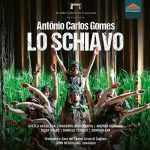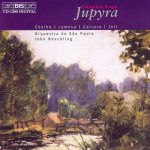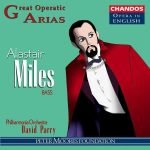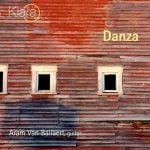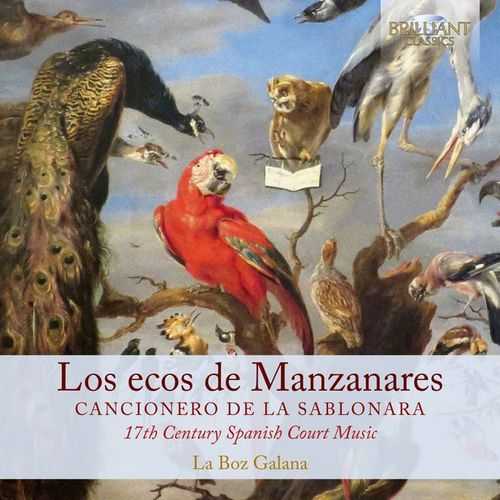
Performer: La Boz Galana
Audio CD
Number of Discs: 1
Format: FLAC (tracks)
Label: Brilliant
Size: 585 MB
Recovery: +3%
Scan: yes
01. Diaz, G: Barquilla pobre de remos (Little Boat, Short of Oars)
02. Diego Gómes: En el valle del ejido
03. Rios: Sin color anda la niña (Palely Goes the Young Girl)
04. Guillherme Barroso: Folías (After a. De los Rios)
05. Rios: Pajarillos suaves
06. Romero, M: Bullicioso y claro arroyuelo (Babbling and Crystal Stream)
07. Castro, Juan de: Desde las torres del alma (Since the Towers of the Soul)
08. Clavijo del Castillo: Tiento Ileno de segundo tono
09. Romero, M: Ricos de galas y flores (Riches of Finery and Flowers)
10. Miguel de Arizo: Vistióse el prado galán
11. Castro, Juan de: Ya no les penso pedir
12. anon.: De tu vista celoso (Suspicious of you Look)
13. Coelho: Susana grosada
14. Joan Pau Pujol: Llamaban los pajarillos
15. Romero, M: Romerico florido
16. Romero, M: Fatigada navecilla
La Boz Galana
Louis Capeille (double harp),
Guillherme Barroso (baroque guitar),
Lore Agustí (soprano),
Sebastián León (baritone)
The Manzanares flows from the Sierra de Guadarrama and passes through Madrid, on its way to join the Jarama river, which in turn becomes swallowed by the mighty Tagus. On the banks of the Manzanares Los Ecos de Manzanaras the young Madrileños of the 1700s would sunbathe and drive horses into the water. The river was as characteristic of the citys life as the theatre, the nightlife, the guitar and the folía (Spanish dance). Under the leadership of Philip IV, Spain was a place of dreams and ambitions, with the New World just over the horizon. The king himself was a great lover of music and dance, and he cultivated a court of singers who could accompany themselves on the guitar. They were led for a period by Alvaro de los Rios (1580-1623) who attracted musicians from across the Iberian Peninsula and farther afield to enhance the cosmopolitan vibrancy of Philips court. The music included on this recording is representative of the transition from Renaissance polyphony to the new Baroque style: on one hand, there are madrigal-like pieces, with elaborate contrapuntal and melodic imitation, and on the other, completely homophonic compositions based on lively rhythms, dance patterns and poems of a popular nature, such as the seguidillas. The secular songs have been taken from a little-known collection, the Cancionero de la Sablonara composed for the Royal Court of Madrid during the first two decades of the 17th century. The collection features many names little known to us now, making the album full of exciting discoveries for lovers of the early Baroque. The songs are interspersed with contemporary instrumental pieces, played here by guitar, chittarone and Spanish double harp.
